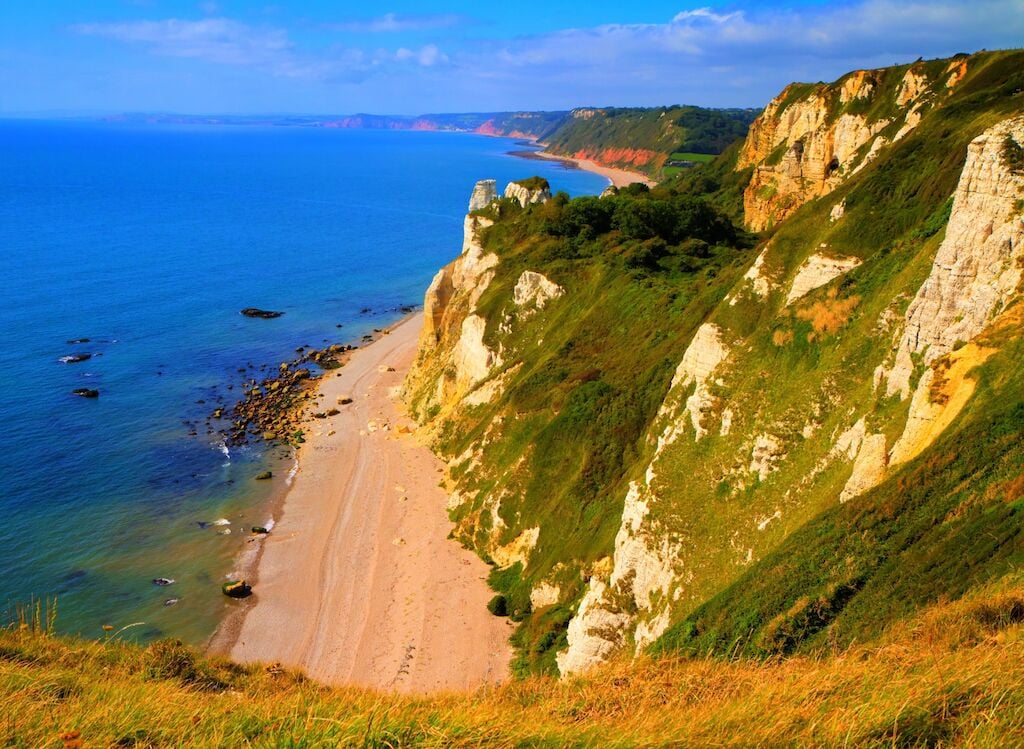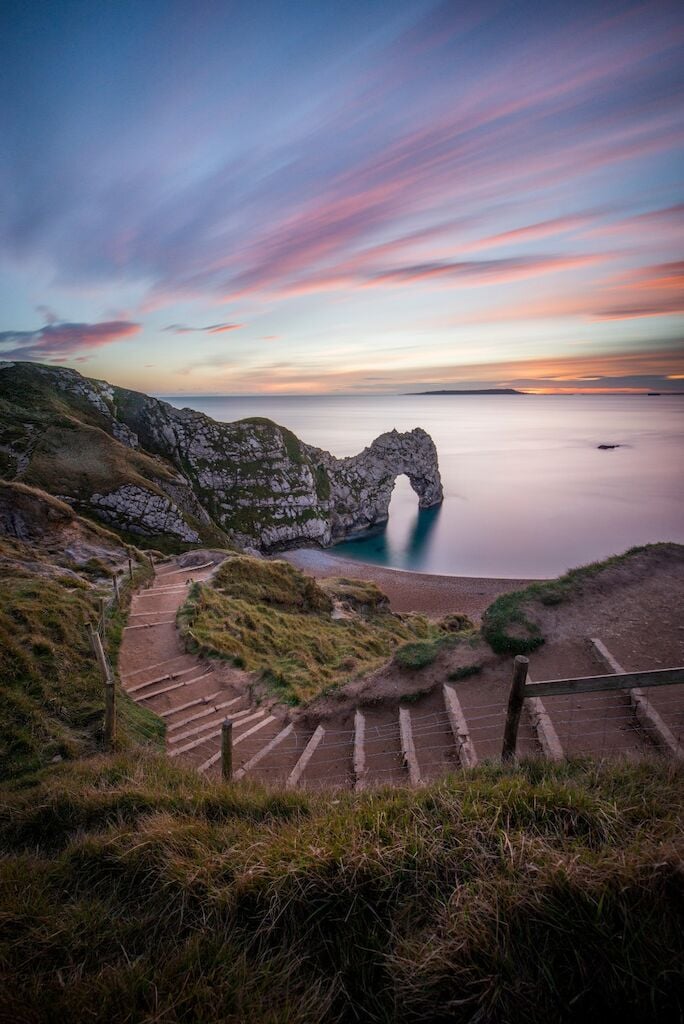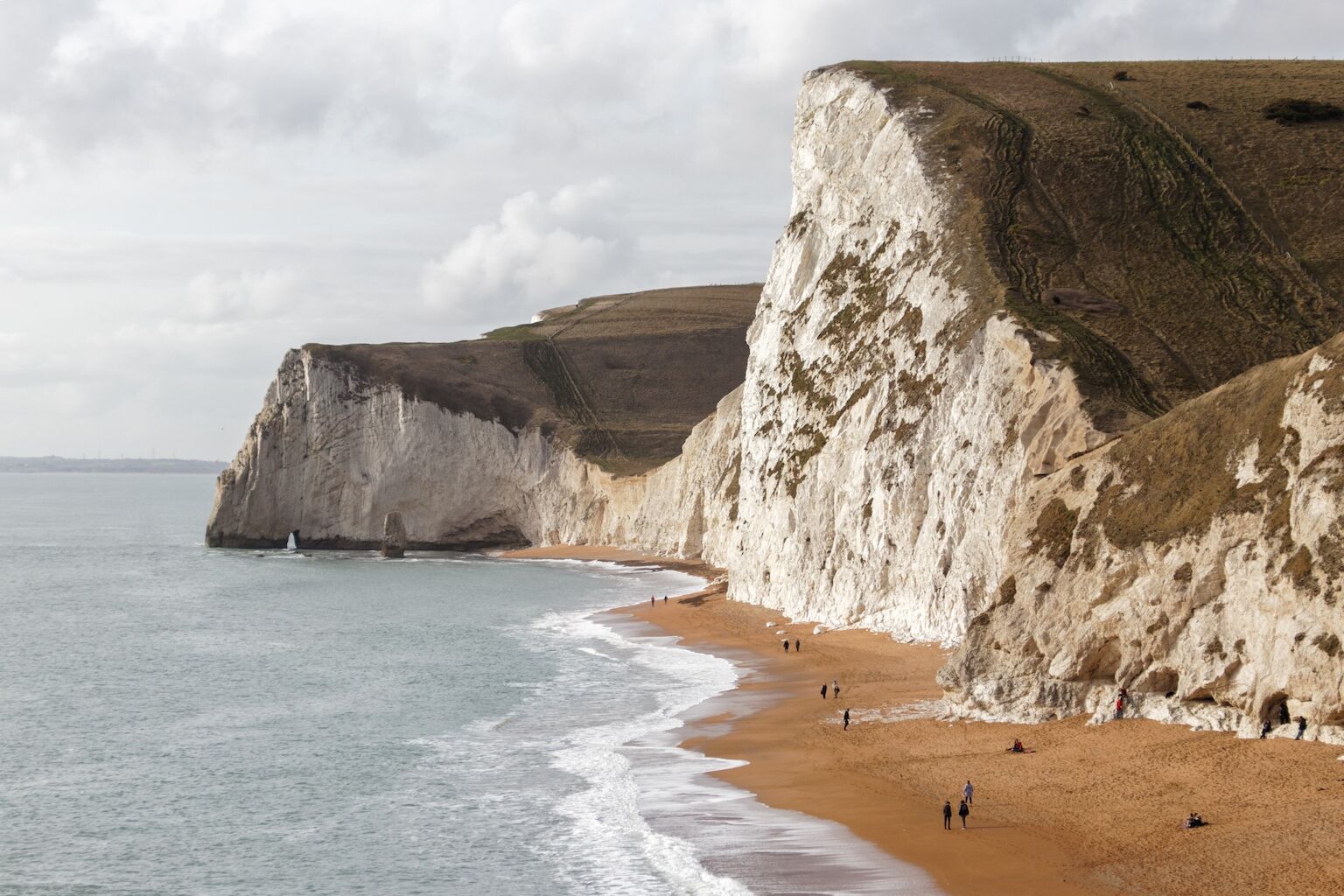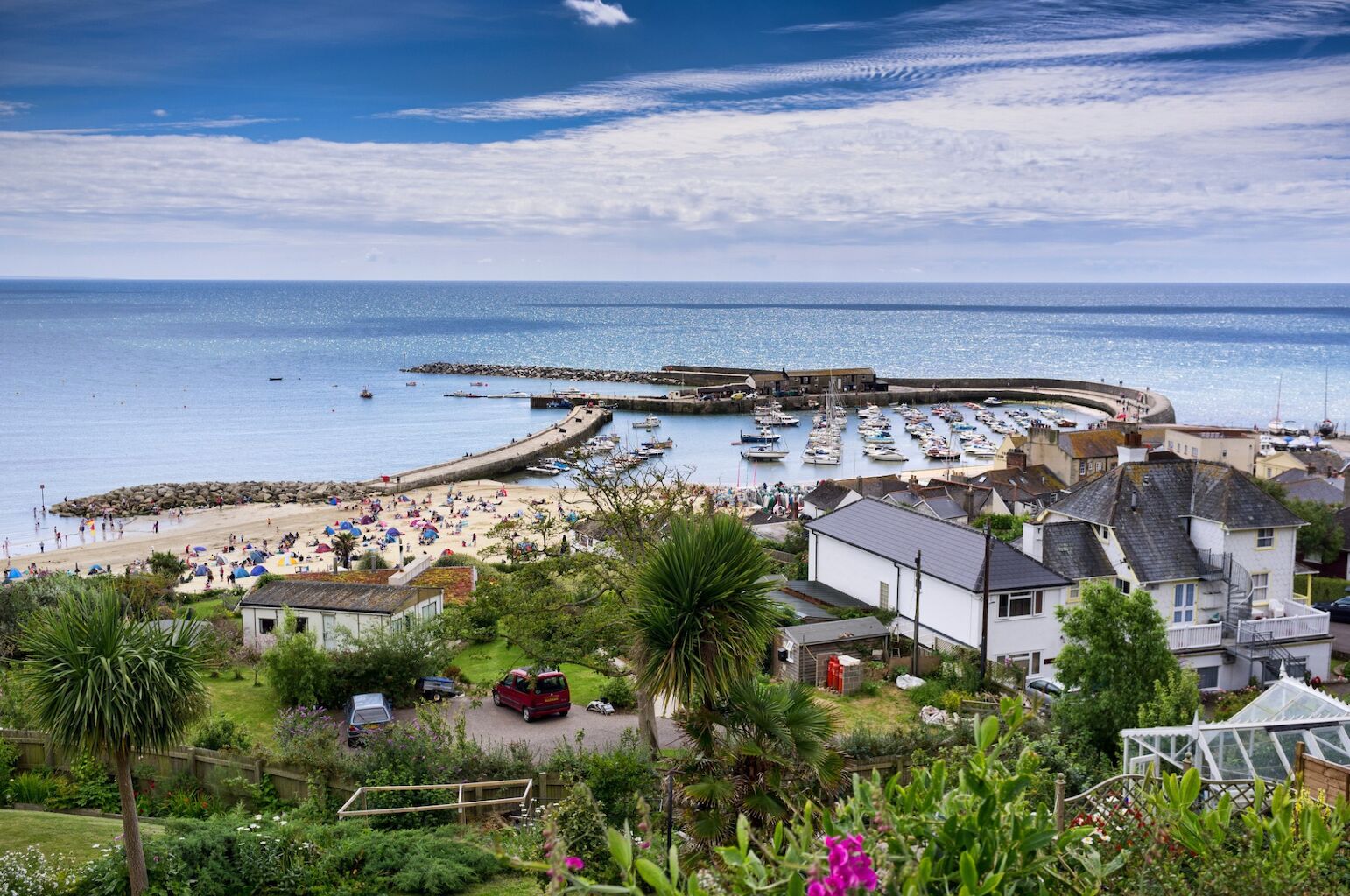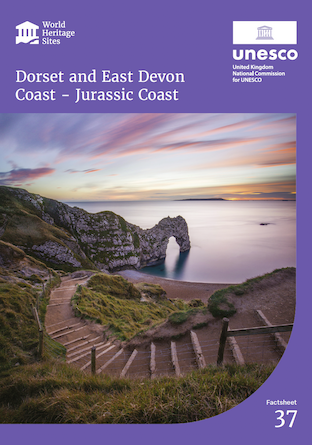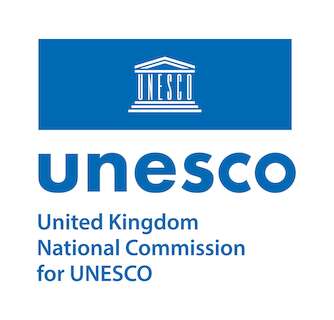Dorset and East Devon Coast: The Jurassic Coast
The Dorset and East Devon Coast, commonly known as the ‘Jurassic Coast’ is a hugely diverse and beautiful landscape on England’s south coast, underpinned by incredible geology of global importance. Its rocks, fossils and landforms span the entire Mesozoic era and provide remarkable insight into 185 million years of environmental change and evolution.
What makes this UNESCO Designation special?
The Dorset and East Devon World Heritage Site, known as the ‘Jurassic Coast’, includes a near complete rock record of the Triassic, Jurassic and Cretaceous Periods of Earth’s history, providing unique insight into how the planet’s climate and environments change through time.
Fossils preserved within this rock record offer vital information about the evolution of life, including the causes, consequences, and recovery from mass extinction events.
Today, the diversity of rock types along the 95-mile-long Site have been shaped into a myriad text-book examples of coastal landforms. The Jurassic Coast has been described as an outdoor laboratory for the study of coastlines and the processes that shape them. The Site has been at the heart of the development of Earth Sciences for over 200 years and remains a key location for education and ongoing scientific research.

